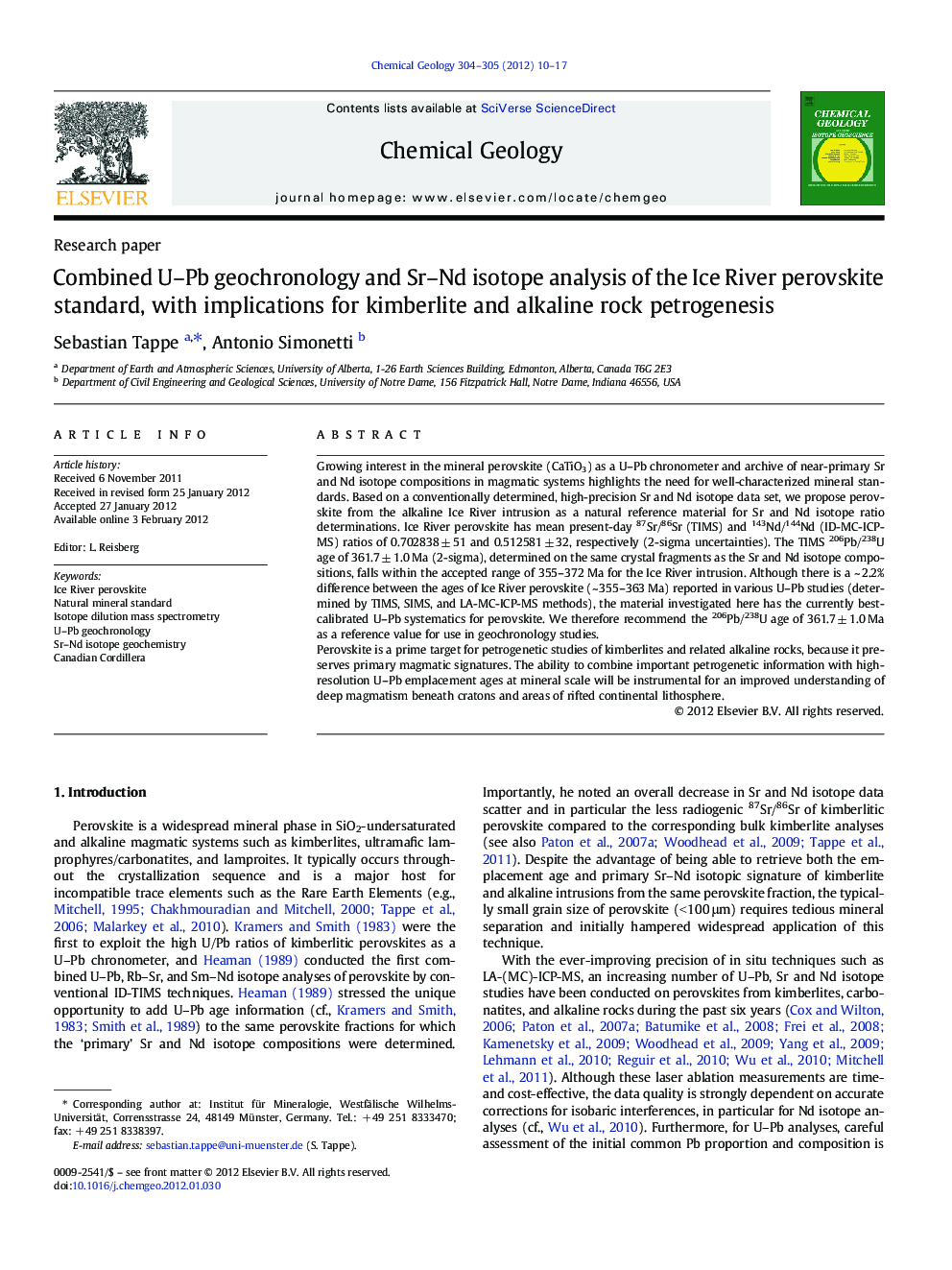| Article ID | Journal | Published Year | Pages | File Type |
|---|---|---|---|---|
| 4699453 | Chemical Geology | 2012 | 8 Pages |
Growing interest in the mineral perovskite (CaTiO3) as a U–Pb chronometer and archive of near-primary Sr and Nd isotope compositions in magmatic systems highlights the need for well-characterized mineral standards. Based on a conventionally determined, high-precision Sr and Nd isotope data set, we propose perovskite from the alkaline Ice River intrusion as a natural reference material for Sr and Nd isotope ratio determinations. Ice River perovskite has mean present-day 87Sr/86Sr (TIMS) and 143Nd/144Nd (ID-MC-ICP-MS) ratios of 0.702838 ± 51 and 0.512581 ± 32, respectively (2-sigma uncertainties). The TIMS 206Pb/238U age of 361.7 ± 1.0 Ma (2-sigma), determined on the same crystal fragments as the Sr and Nd isotope compositions, falls within the accepted range of 355–372 Ma for the Ice River intrusion. Although there is a ~ 2.2% difference between the ages of Ice River perovskite (~ 355–363 Ma) reported in various U–Pb studies (determined by TIMS, SIMS, and LA-MC-ICP-MS methods), the material investigated here has the currently best-calibrated U–Pb systematics for perovskite. We therefore recommend the 206Pb/238U age of 361.7 ± 1.0 Ma as a reference value for use in geochronology studies.Perovskite is a prime target for petrogenetic studies of kimberlites and related alkaline rocks, because it preserves primary magmatic signatures. The ability to combine important petrogenetic information with high-resolution U–Pb emplacement ages at mineral scale will be instrumental for an improved understanding of deep magmatism beneath cratons and areas of rifted continental lithosphere.
► Ice River perovskite is a suitable standard for U–Pb geochronology and Sr–Nd isotope ratio determinations. ► Ice River perovskite yielded a concordant 206Pb/238U age of 361.7 ± 1.0 Ma. ► Ice River perovskite has mean 87Sr/86Sr of 0.702838 ± 51 and 143Nd/144Nd of 0.512581 ± 32. ► New calibration of Ice River perovskite will ensure data quality of in situ measurements in kimberlite research.
